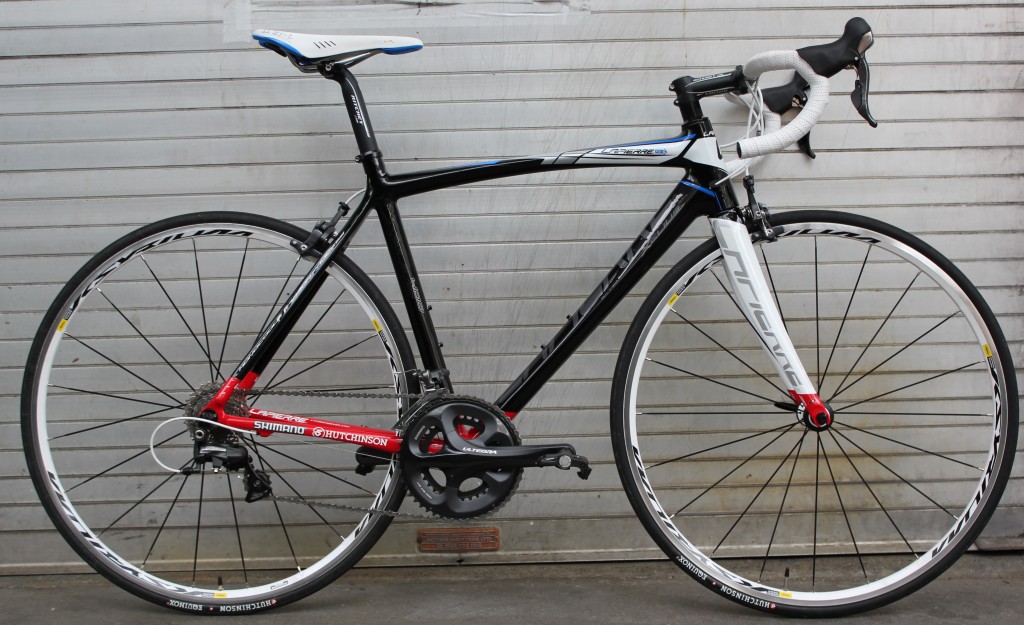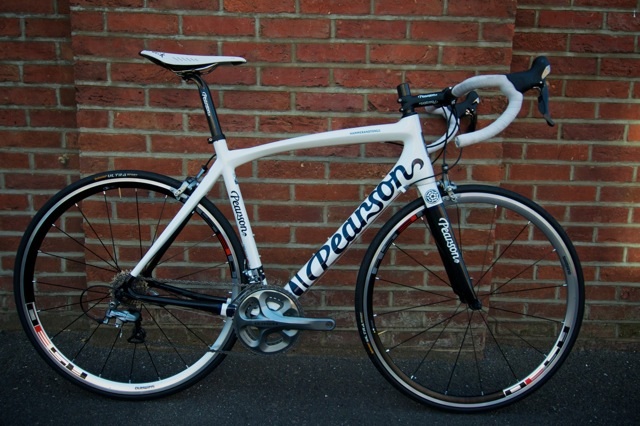Here’s the first of our French test bikes, called in to celebrate a month in which the world’s biggest bike race was staged for the 99th time.
To that end, Lapierre’s FDJ-liveried Lapierre Xelius 400, a machine that retails at £2,849.99, seemed a sensible complement to the exotica set to hit these pages from LOOK and Time.
Our 52cm test model (one of five from a range opening with a XS 46cm and closing with the 58cm XL model) features parallel 73-degree head and seat angles, which promise a responsive ride.

The 150mm head tube is tall for the size (10mm higher than an 52cm, H2 fit Madone 7, for example; 5mm higher even than Cannondale’s comfort-focussed Synapse Carbon 3 Ultegra in its 51cm iteration), which may be an aid to comfort for riders with limited flexibility.
Tube profiles are in more modest proportions than those of the more race-oriented machines recently tested at RCUK (the Scott Foil Team Issue and A:xus Duran spring to mind). The bottom bracket shell is just 6.5cm across its underside, bucking a trend for press fit BBs in bulky shells (Trek’s enormous BB90 standard being a good example). We’ll be interested to see how the comparatively svelte unit of the Xelius 400 performs.
All of the tubes are aero formed to a degree, except the seat tube which is round until suddenly broadening to a flattened triangular shape just 5cm above the bottom bracket. The down tube is transformed from flat oval at the bottom bracket to an upright triangle at its junction with the head tube; the top tube follows a similar journey (flat oval at its junction with the seat tube, triangular at the headtube) only with the point of the triangle facing downwards. The extra heft of both tubes at their junction with the head tube promises stiffness at the front end.
Cables are routed internally, with the rear brake cable disappearing into the upper side of the top tube just behind the head tube, emerging on the underside in front of the seat tube.
The 41cm chainstays narrow from 4cm at the bottom bracket (where their depth is required for stiffness) to 2cm at the drop out. Like the Scott Foil Team Issue recently tested, they slope dramatically towards the wheel in a further nod to aero performance.
The blades of the Easton EC90 carbon fork are flattened and rise to a shallow point on their outward edge. Its steerer tapers from 1.5” to 1-1/8”, allowing for a larger bearing at the crown, a feature typical on machines of this construction and price.
We’re pleased to see a full Shimano Ultegra groupset (10-speed, mechanical, and with a compact chainset on our test bike – a 52-39 ‘DB’ model is also available), which extends to the cassette. The chain is from KMC.
The Equipe wheelset is the entry point to Mavic’s Ksyrium range of welded aluminium clinchers, and an unsurprising inclusion at this point (Cannondale spec the same on their SuperSix Three Ultegra, for example). Lapierre have shod them with slick Hutchinson Equinox2 23c tyres.
Finishing kit comes from Ritchey (an aluminium WCS seat post, an Axis 4, 100mm aluminium stem, and Logic Curve bars) and from Fizik (a Pavé CX saddle).
We’ll be out on the Xelius 400 in the weeks ahead. Full review to follow.





